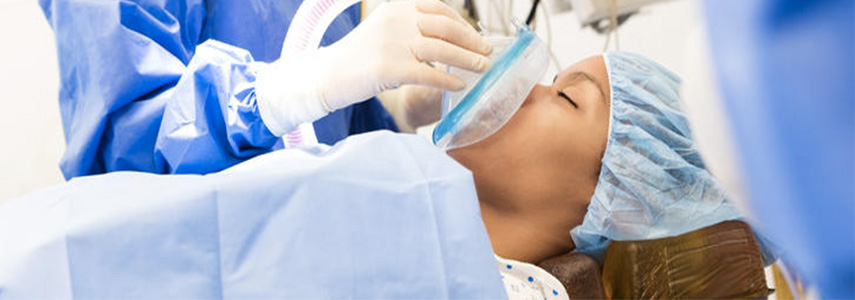Being asleep and undergoing dental surgery is a condition that scares many patients, but there are different types of anesthesia, knowing their applications could be reassuring.
What types of anesthesia for a dental operation?
 The goal of anesthesia is not to feel pain. However, not all patients, especially dental phobics, think that losing consciousness can balance pain relief.
The goal of anesthesia is not to feel pain. However, not all patients, especially dental phobics, think that losing consciousness can balance pain relief.
In this regard we would like to break a spear in favor of modern dentistry, the dentist-pain combination is now a myth to dispel. Thanks to new technologies and modern dental techniques, even complex interventions, such as implantology, are painless interventions.
However, there are different types of anesthesia based on the types of treatments to be performed, for each specific clinical case the dentist will evaluate what type of anesthesia to apply.
Anestesia totale
In the field of dentistry, total anesthesia is applied only for very complex procedures, such as maxillo-facial surgery. In these cases the presence of an anesthesiologist and an adequate medical structure are necessary, in terms of professional skills and instrumentation, capable of intervening in emergency circumstances or particular complications.
Localized anesthesia
There are different types of local anesthesia, they are distinguished by application methods:
1. Topical local anesthesia
The affected part is cooled with a spray or gel to make it insensitive. This type of anesthesia is used for short-term treatments and mainly on the oral mucosa, an example could be the incision of an abscess.
2. Local plexus anesthesia
It is applied by direct injection of the anesthetic near the area involved in the dental procedure. Local plexus anesthesia is mainly used for operations on the teeth of the upper arch, whose bone is more porous and better able to absorb the anesthetic.
3. Troncular local anesthesia
It is always a direct injection of the anesthetic into the affected area, but is applied to the nervous tissue, in particular near the mandibular nerve. This type of anesthesia is usually applied for operations on the teeth of the lower arch, where the bone is more compact.
4. Intraligamentous local anesthesia
Intraligamental anesthesia is injected directly into the periodontium, its main application being for tooth extractions.
Conscious sedation
 Conscious sedation is an innovative method of anesthesia, it is used for particularly anxious patients or for difficult patients, because in addition to eliminating pain, it provides the patient with a state of stillness and serenity.
Conscious sedation is an innovative method of anesthesia, it is used for particularly anxious patients or for difficult patients, because in addition to eliminating pain, it provides the patient with a state of stillness and serenity.
The patient is given nitrous oxide, a gas capable of eliminating the perception of pain and calming anxiety. After inhaling nitrous oxide through a nasal mask, the patient enters a semi-conscious state, but is able to respond to external stimuli. Breathe independently and even the heart rate remains unchanged.
This condition allows the patient to interact with the dentist and thus maintain control over all phases of the operation, without feeling pain and feeling completely relaxed.
At the end of the intervention pure oxygen is administered to completely eliminate the effect of nitrous oxide.
Conscious sedation can be administered intravenously; it often occurs to prevent tubes and masks from interfering with the surgeon’s work.
Any type of dental treatment can therefore be tackled with maximum relaxation.
In the practice of conscious sedation there is no type of contraindication, it is in fact indicated for:
- children;
- odontophobic;
- handicapped;
- Senior citizens;
- hypertensive.
The only cases in which it would be better not to expose oneself to conscious sedation are for women in the first three months of pregnancy and patients treated with antidepressants.
As it is easy to see from this article, there are different types of anesthesia, the dentist will always evaluate the most appropriate based on the patient’s treatment and clinical history.









